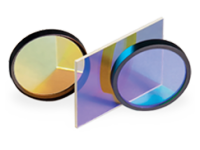 Moravian Instruments astronomical cameras are often presented as tools for getting beautiful pictures of the deep sky wonders. But Moravian cameras have also other side — they are often used to gather scientific measurements leading to world-class research. Check the article The complex dynamical past and future of double eclipsing binary CzeV343: misaligned orbits and period resonance for one such example of research using data gathered with Moravian cameras. CzeV343 appears as a dot on the sky, but it is revealed to be amazingly complex system of four gravitationally bound stars, evolving in a complex pattern of mutual orbits. Moravian Instruments astronomical cameras are often presented as tools for getting beautiful pictures of the deep sky wonders. But Moravian cameras have also other side — they are often used to gather scientific measurements leading to world-class research. Check the article The complex dynamical past and future of double eclipsing binary CzeV343: misaligned orbits and period resonance for one such example of research using data gathered with Moravian cameras. CzeV343 appears as a dot on the sky, but it is revealed to be amazingly complex system of four gravitationally bound stars, evolving in a complex pattern of mutual orbits. |
|
Such research may help to understand many still unsolved questions about the universe, like the origin of certain types of supernovae, star mergers, paths leading to exoplanets orbiting their host stars within days etc.  The image above, taken from the mentioned article, shows a portion of the CzeV343 double eclipsing quadruple star brightness variations over three days as measured by the space telescope TESS in gray dots. Blue dots are ground based measurement of the same star taken with the C3-61000 CMOS camera. While the ground based observations are naturally limited to intervals when the star was above the horizon at night, their precision is definitely not worse compared to space telescope based ones. |











